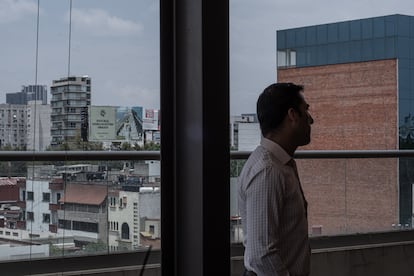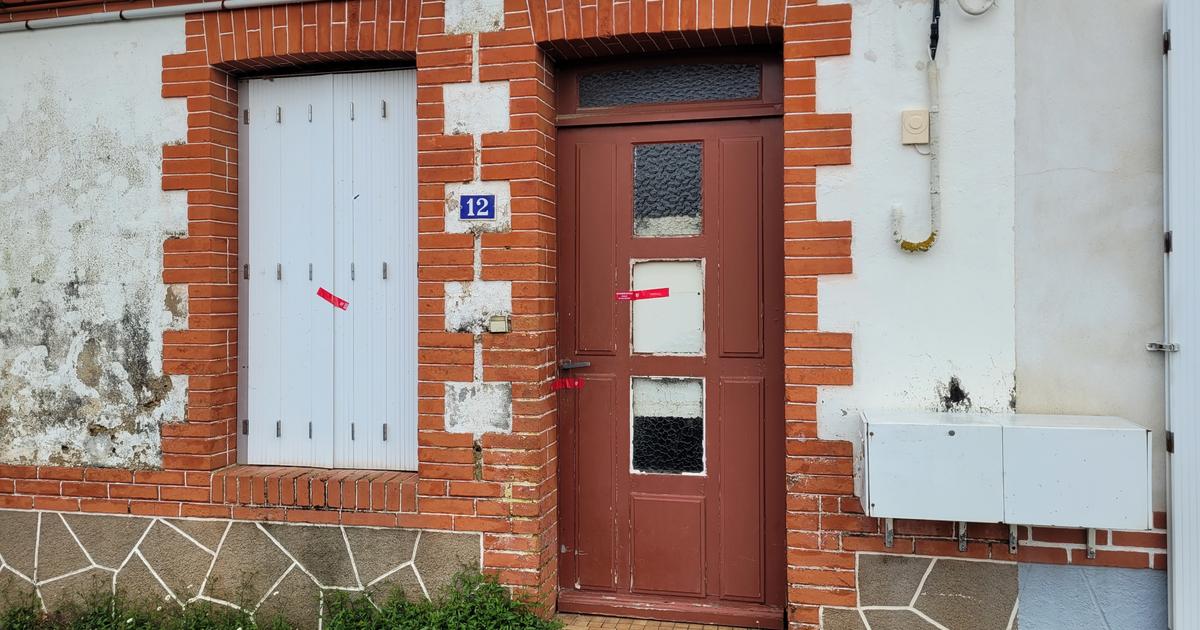Rodrigo García, conductor of the subway that crashed on May 3 in Tláhuac, Mexico City.Aurea Del Rosario / El País
It was the end of a long journey.
Rodrigo García had only 20 minutes left to complete the journey to the Tláhuac terminal, the last stop in the eastern direction of Line 12. At 22:22, everything changed.
In a matter of seconds, two wagons of the convoy that García was driving collapsed, next to the section that supported the track, before reaching the Olivos station.
Four days after the last tragedy that has mourned Mexico City, the subway driver that suffered the collapse relives the accident that left at least 25 people dead and dozens more injured, the rescue work of the victims and the maneuver of braking that prevented more people from dying.
"You never expect something like this to happen to you," says the 39-year-old driver, "I don't wish it on anyone."
More information
What went wrong?
The doubts and hypotheses behind the tragedy in the Mexico City metro
Sheinbaum, in the face of criticism after the accident: "This is how we received Line 12, this does not happen on any of the other subway lines"
The collapse on Line 12 of the metro puts the Government's austerity policy in the spotlight
García stares into the void before remembering what happened and beginning the narrative. "Before entering Olivos station, the train gets up,
jiggles
[shakes]," he says in a calm voice. Amid the jolting of the wiring, the driver observed that the BS box, which indicates vehicle faults, marked that the power and circuit breakers had been cut off. Moments later all the unit's monitors were turned off, but he managed to put the emergency brake on, just time to prevent more cars from falling and the tragedy was greater. The train continued to slide and the front part reached the station. "When it comes to a stop, I look straight ahead and see nothing," he recalls.
The driver says he tried to get out, but the cab door was locked and he had to open it manually with a triangle key.
"I go out, I look out and when I turn back I see smoke," says García.
"I move forward, towards the platform and take the signal telephone, with which we communicate directly with the regulators, our bosses, to inform or report any situation," he adds.
Based on this communication, the network regulators decide to cut the current throughout Line 12.
- I inform you: I see the presence of smoke, I see that there are people leaving the train.
- OK, mate.
Proceed to reassure and talk to people, ”the regulator told him.
García reproduces the conversations word for word, always in the present.
The driver began walking through the five carriages that had remained level with the platform and opened the doors manually so that people could exit the carriages. "There was a power cut, calm down, right now we are going to evict you," he yelled at the passengers, who clung to the windows to try to listen. "The people [in the front cars] were calm, they didn't know what was happening, nobody was running, everyone was walking down," he says, "there were even people coming out of the cabin."
“Come down, please.
Everyone evict, ”Garcia shouted.
"When I turn around, I meet the stationmaster who tells me: 'your train has derailed."
The driver couldn't believe it.
The manager of the Olivos stop was helping people trying to get out and left shortly after to inform the regulators.
"People were leaving the part of the train that was slit, where the wagons fell off, to get to the platform," he says.
When he was left alone on the road, he realized that something was worse than he expected: “What I thought was smoke, was dust.
All you could see was dust. "
Upon his return, the inspector and he were authorized to go see what had happened in the rear of the convoy.
“Your train did not derail”, corrected the inspector, “the
whale
[platform] fell, all this collapsed. "
- I inform you: I am here at the Tezonco-Olivos interstation.
I inform him: the
whale
collapsed.
"What do you mean, he collapsed ?!" The regulator said dumbfounded.
After hanging up on the signal phone, Garcia returned to the track and entered the last car that had managed to stay on the bridge.
"There were three people on the floor passed out," he says.
"I see and come to a part where there was an arm, we never saw the other parts of the body," he says.
According to his testimony, inside the train there were also conscious travelers who had been caring for other people who were injured.
A man was left looking for his wife: "I told him to stay with her, support her, do not move from there, do not separate".
- If you are not familiar, please come down.
"My friend stayed behind, in the other car," said a boy.
- Which wagon?
- The one that fell.
The passengers in the first five cars mostly managed to get out on their own, Garcia says.
The last two of the convoy collapsed on Tláhuac Avenue.
The train, according to the conductor's calculations, was at three-quarters of its capacity.
“There was a moment when we were there seeing where more people were [in one of the units that fell], we heard noises and we started shouting: Is there someone there?”, García says, “and then they start screaming and hitting in the train that was down, towards the avenue.
The Auxiliary Police comes to break a window and they manage to get a guy out ”.
Rodrigo García, at the offices of the National Union of Workers of the Collective Transport System Aurea Del Rosario / El País
"Rodri, are you okay?" Asked one of his companions when he left the platform.
"He hugged me and I started crying," he confesses.
"It was not your fault, you only fulfilled your role," he said before a colleague accompanied him to the hospital.
García says that the car that they had lent him to go to the emergency room was trapped, he could not get out of the police cordon.
When he finally got to the doctor, they detected a lumbar ailment, but he was fine, although he was still
in shock
.
The driver is not comfortable with either the hero or the guilty label.
"I can't say 'I saved them', I just performed the maneuver I had to do," he says, on the one hand.
"I don't feel like I'm guilty," he replies, on the other.
"I feel that it would have happened to any other colleague," he reflects, "unfortunately, it was my turn."
In the days following the tragedy, media attention and scrutiny has focused on the causes of the collapse. "Along these lines there have been many conflicts," he says before pausing, "there are many things that can be seen from within." Garcia begins to list that long list of problems: wear on the wheels and on the rails; trains that are left without radio, cut off; doors that do not work; a route full of curves, and where the wagons sway. "When the earthquake [of 2017] occurred, there were many effects, especially in the pillars, in the part at street level," he says. "There are parts where the train slows down and the entire station moves, I don't know if it's normal," he adds.
The National Union of Workers of the Collective Transport System, to which it belongs, has claimed in recent days that its members do not have the conditions to work safely, although the authorities defend that the resources for the metro are sufficient to guarantee the operation. "If you are already seeing problems before, you analyze the whole line, right?", Asks García. After the tragedy, the complaints of the residents of the area revived due to the poor conditions of the infrastructure and the complaints were extended to other lines. This same week the La Raza station was flooded and there was a short circuit at the Pantitlán station, which connects with more lines.
However, the metro conductor is not encouraged to directly point to the failures that had been registered since the earthquake and the lack of resources as direct causes or signs that the tragedy could be prevented.
"All this is something that I carry deep inside, I keep to myself that my colleagues did not leave me alone and supported me," says García from the union's offices, still without deciding if he will take control of the machines again.
Subscribe here
to the
newsletter
of EL PAÍS México and receive all the informative keys of the current situation of this country








/cloudfront-eu-central-1.images.arcpublishing.com/prisa/XRN4JBKGQBOHVLS4HGW7BTWI4U.jpg)






